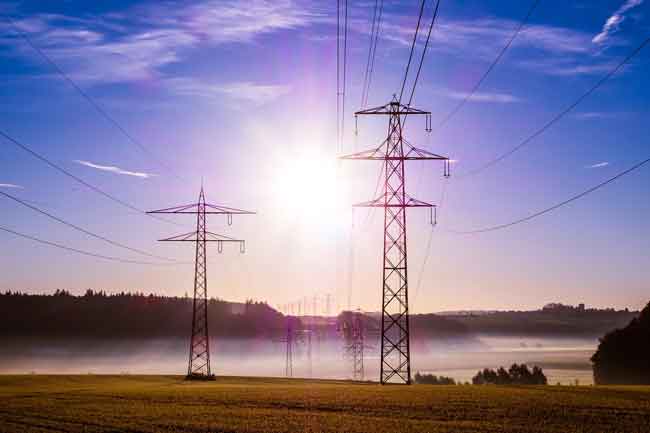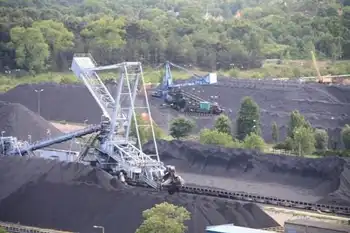Areva plans to build worldÂ’s largest uranium mine
By Stockhouse
NFPA 70e Training - Arc Flash
Our customized live online or in‑person group training can be delivered to your staff at your location.

- Live Online
- 6 hours Instructor-led
- Group Training Available
With a license from that countryÂ’s mining ministry already in place, construction is set to begin immediately, on a site about 300 kilometres west of Windhoek, NamibiaÂ’s capital. According to Areva, the mine should be online come the end of 2009 with annual extraction of six million to eight million pounds of uranium.
All in all, another phenomenal week for the nuclear industry, but weÂ’re still not seeing the enthusiasm spilling over into what is largely believed to be a depressed uranium market. The spot price of uranium is holding steady at US$60 a pound U3O8, according to price publisher Tradetech, but rival publisher Ux Consulting dropped its spot price estimate US$2 to US$57 a pound U3O8 and investors are getting impatient.
The National Post, for example, interviewed RBC Capital analyst Adam Schatzker, who argued that if low uranium prices continue, investor will lose patience and look to put their money elsewhere, taking with them the funds required for future exploration and development of the sector.
Schatzker worried the absence of equity market participation in the uranium industry could cause uranium demand to outstrip uranium supply, which could then negatively affect reactor build programs from utilities around the globe. As it stands, uranium bulls will tell you uranium prices are already strengthening. Others expect the usual summer slowdown could hold the metalÂ’s prices down, but feel the return of buying from utilities in the fall will help drive prices upward.
UraniumÂ’s long-term price is steady at US$90 a pound U3O8, at least through the end of June. The term market is also seeing much higher transaction volumes than the spot market. According to Toll Cross Securities, nearly 35 million pounds of U3O8 have been term contracted in June to date, compared with roughly one million pounds on the spot market.
Uranium futures for July are worth $60; August futures, $62; September, $64; October, $66; November, $68; and December, $70. Futures for June 2009 and December 20009 are both worth $74. ThatÂ’s good news, but tell that to investors dropping uranium from their portfolios. The bottom line is that if the spot market is indeed oversold, as many analysts claim, we should be seeing some upward movement soon.
The United States is the best place in the world to invest in nuclear projects, according to a new report commissioned by the UK government. But Canada isnÂ’t looking too shabby either, with several announcements of plans for new and increased nuclear power generation across the country. According to a research report commissioned by the UK government and completed by Ernst & Young, investors would be hard-pressed to find a better home for nuclear projects than the United States. World Nuclear News reported the UK, China, and South Africa are next-best places, in that order. The States is said to lead the pack largely thanks to government backing and financial support.
A summary of the report was presented in London recently, by the UKÂ’s department of business and enterprise during an inaugural Financing Nuclear Power conference. Attendees were also told investors are embracing the worldÂ’s new nuclear markets with confidence, and another presentation of research findings stated nuclear power is the cheapest source of electricity generation, assuming the reduction of carbon costs is a prime objective. Delegates also heard that investors around the world are embracing nuclear power projects because theyÂ’re profitable.
In Canada, the provincial government of Ontario announced the Darlington nuclear station is to receive two new reactors, with bids from designers — including Atomic Energy of Canada, Areva, and Westinghouse — due October 1. According to reports, the Ontario government has set aside $26 billion for the project and would like to see the new reactors online come 2018. Nuclear power already accounts for 11,4,00 MW of Ontario’s electricity and the new reactors are expected to boost that by roughly 20%.
Elsewhere in Canada, in the prairie province of Saskatchewan, the world's largest producer of uranium is looking to enter the nuclear power game. Bruce Power, a joint venture spearheaded by local uranium behemoth Cameco, will study the feasibility of bringing a nuclear reactor to the province.
Saskatchewan Premier Brad Wall is a strong supporter of nuclear power, often comparing SaskatchewanÂ’s uranium reserves to the oilfields of Saudi Arabia. But critics of the plan, including that provinceÂ’s opposition party, say Bruce PowerÂ’s announcement is a move to turn Saskatchewan and neighbouring Alberta against each other in a race for nuclear power.
Indeed, earlier this year, Bruce Power filed an application with the Canadian Nuclear Safety Commission for approval of as many as four reactors near Peace River, Alberta.
The Canadian Press reported that Bruce Power would begin its analysis this summer and issue a report by the end of 2008.
Meanwhile, at the 2008 Australasian Institute of Mining and Metallurgy’s International Uranium Conference, delegates heard Australia could have a uranium conversion industry in the next five to 10 years. Uranium conversion — the process of turning Australian-made yellowcake into uranium hexafluoride — is the next logical step for the Australian nuclear industry, which now entertains serious discussions about moving to the next step in the uranium fuel cycle, delegates were told.
General Electric is also looking to dive deeper into the nuclear game by producing and selling fuel for nuclear reactors. The Wall Street Journal reported GEÂ’s quest got a boost just recently, when its nuclear-energy joint venture closed a deal with Canadian uranium giant Cameco, which will help GE Hitachi Nuclear Energy commercialize uranium-enrichment technology currently being developed.











